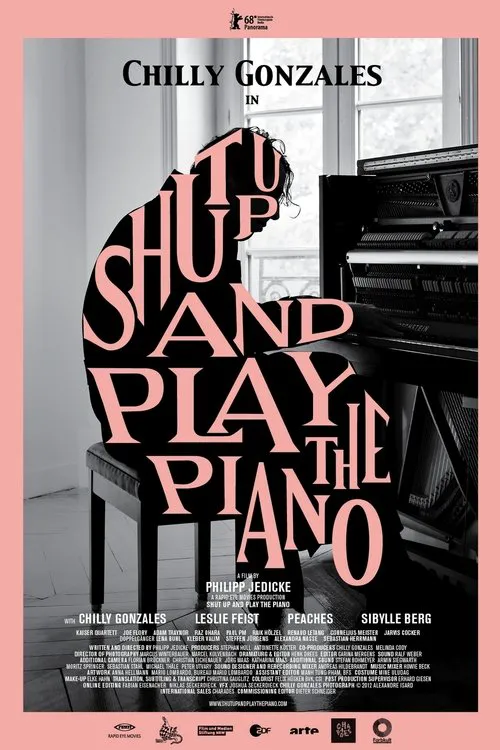Shut Up and Play the Piano

Plot
Chilly Gonzales, the renowned composer and pianist, is a paradoxical figure - a man whose music embodies elegance and sophistication alongside a hint of rebelliousness. His journey, chronicled in the documentary "Shut Up and Play the Piano," is a captivating tale of artistic expression, self-discovery, and the blurring of lines between creative vision and commercial success. With Gonzales' permission to delve deep into his life, the documentary takes viewers on a thrilling ride, traversing from his humble Canadian roots to the vibrant streets of '90s Berlin, and finally, to the grand stages of the world's most iconic philharmonic halls. Born Juno Award-winning Jason Charles Beck, Gonzales' early musical endeavors were rooted in classical music. However, it wasn't until he adopted the alter ego of Chilly Gonzales that his artistry began to take shape. This transformation marked the beginning of an incredible journey, one that would see him oscillate between periods of intense creative experimentation and crippling self-doubt. The documentary masterfully captures this dichotomy, highlighting how Gonzales' persona seamlessly switches between vulnerability and arrogance. As Gonzales recounts his formative years, it becomes clear that his struggles with self-esteem played a significant role in shaping his artistic trajectory. Faced with the daunting task of making a name for himself in the competitive world of classical music, Gonzales found solace in adopting the alter ego of Chilly Gonzales. This pseudonym allowed him to express himself freely, unshackled by the expectations and conventions that came with being a classical musician. The documentary's narrative seamlessly transitions from Gonzales' Canadian upbringing to his introduction to the vibrant Berlin music scene of the late '90s. It is here that he meets his mentor and friend, Thomas Fehlmann, an electronic music pioneer who recognized the potential in Gonzales' compositions. Fehlmann's influence had a profound impact on Gonzales, introducing him to the world of electronic music and encouraging him to push the boundaries of his art. Berlin, with its rich cultural heritage and history of artistic revolution, proved to be a catalyst for Gonzales' growth as a composer and performer. The city's underground music scene provided the perfect backdrop for Gonzales to hone his craft, experimenting with a fusion of electronic and classical elements that would eventually become the hallmark of his distinctive sound. As Gonzales' music began to gain international recognition, he found himself transitioning from the anonymity of the underground to the spotlight of the world's most renowned concert halls. The documentary masterfully captures this transformation, showcasing Gonzales' rise to fame and the subsequent pressures that accompanied it. From the grand stages of Paris to the iconic Carnegie Hall in New York, Gonzales performs his compositions with an air of confidence that belies his long-fought struggles with self-doubt. Throughout the documentary, Gonzales' introspective nature is on full display, as he candidly addresses the complexities of his relationship with fame. Despite his outward confidence, it becomes clear that the pressures of maintaining his artistic vision within the commercial landscape continue to weigh heavily on his mind. This paradox is at the heart of "Shut Up and Play the Piano," highlighting the tension between creative freedom and the need for external validation. Ultimately, Gonzales' story serves as a testament to the enduring power of art to transcend limitations and defy expectations. Through his music, Gonzales has created a unique space where the dichotomies of his personality are reconciled, allowing him to express himself with unbridled passion and vulnerability. The documentary, with its intimate and unflinching portrayal of Gonzales' life, serves as a poignant reminder that the line between artistic vision and commercial success is often blurred, and that true fulfillment can only be achieved when creativity is unencumbered by the demands of the external world. As the documentary comes to a close, Gonzales sits at his piano, his fingers poised over the keys as he awaits his turn to perform. The stage is set, the lights are ready, and the anticipation is palpable. It is in these moments that we witness the transformation of Jason Charles Beck into Chilly Gonzales - a master showman who has overcome his self-doubt to become one of the most compelling and innovative artists of our time.
Reviews
Recommendations




